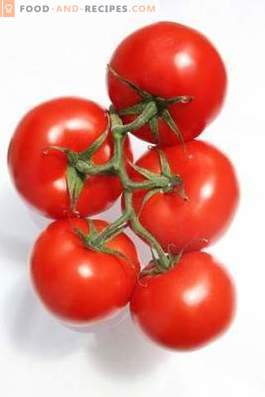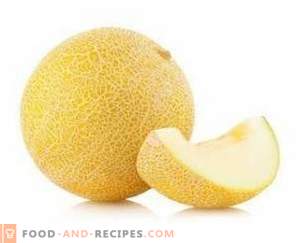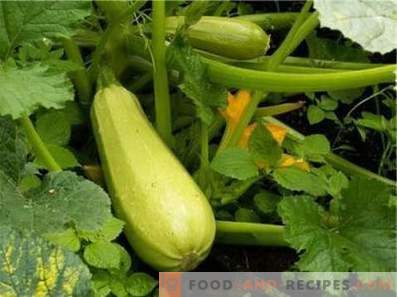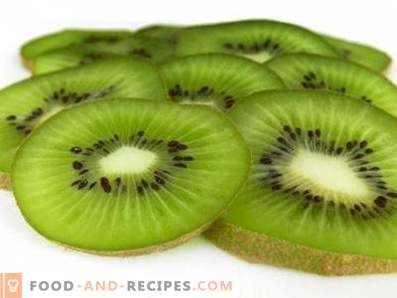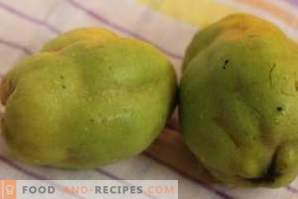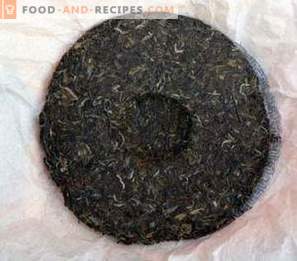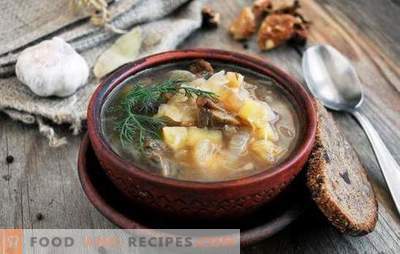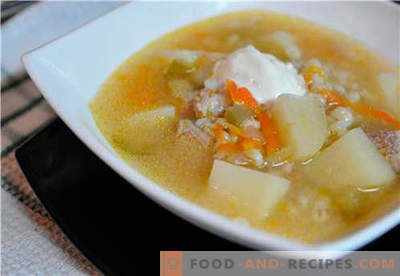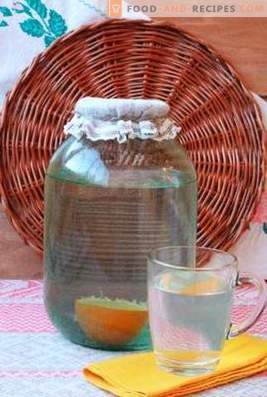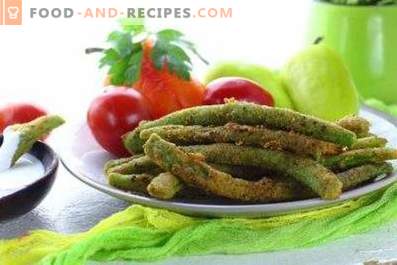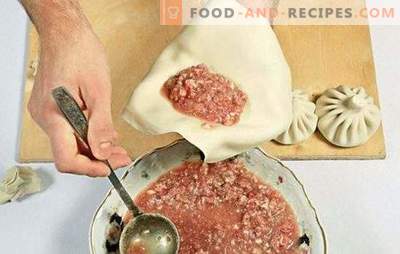
Cherry is a perennial woody plant belonging to the genus Plum of the Pink family. The Black Sea coast of Asia Minor is considered the birthplace of representatives of this species. According to legend, this culture came to Europe in 74 BC: the first cherries were brought to Rome by the famous commander Lucullus. In the future, this plant quickly spread throughout the European territory.
In Russia, cherries began to grow in the XII century. The appearance of this culture in the Russian lands is associated with the name of Yuri Dolgoruky, who broke several large cherry orchards in the vicinity of Moscow. In the 15th century, cherries became one of the most popular garden crops in Russia: locals realized that all parts of this unique plant (fruits, branches, bones, bark, leaves, juice, flowers, stems, etc.) can be invaluable to human health. .
Cherry is a low shrub or tree with brownish-gray bark, reaching a height of 9 meters. The leaves of the plant have an elliptical shape, a dark green color at the top and a pale green one at the bottom. Flowering cherry begins in mid-spring: in the last days of March or in early April. White or light pink flowers of the plant are collected in small umbrellas (usually 2-3 pieces). The fruit of the cherry is a bright red, pink or burgundy drupe, which has a specific sweet-sour taste.
Most often, cherry fruits are eaten raw, unprocessed, or used to make jams, preserves, juices, mousses, jellies, compotes, syrups, mashed potatoes, liqueurs, fruit wines and liqueurs. In addition, all parts of this amazing plant are used in alternative medicine to treat a whole range of pathologies.
Nutritional value of cherries and vitamins in its composition
Cherry fruit is a useful food product containing a whole range of vitamins and other beneficial compounds.
Nutritional value 100 g of cherry:
- 0, 769 g of proteins;
- 0, 187 g of fat;
- 10, 586 g of carbohydrates;
- 1, 766 g of fiber;
- 1,499 g of organic acids;
- 83, 787 g of water;
- 10, 494 g of disaccharides, monosaccharides;
- 0, 094 g of starch;
- 0, 593 g of ash.
Vitamins per 100 g of cherry:
- 0, 098 mg of beta-carotene;
- 0, 029 mg of thiamine (B1);
- 0, 298 mg of tocopherol equivalent (E);
- 5, 991 μg of folic acid (B9);
- 14, 998 mg of ascorbic acid (C);
- 0, 476 mg of niacin equivalent;
- 076 mg of pantothenic acid (B5);
- 0, 378 mg of vitamin PP;
- 0, 029 mg of riboflavin (B2);
- 0, 392 μg of biotin (H);
- 0, 048 mg of pyridoxine (B6);
- 16, 779 µg of retinol equivalent (A).
The energy value of the cherry
Cherry is a dietary product with a relatively low energy value. Dishes from these berries (excluding those of which sugar is included) can be included in the menu of diets aimed at combating obesity.
Calories per 100g:
- fresh cherries - 51, 667 kcal.
- cherry juice - 46, 443 kcal.
- cherry compote - 98, 141 kcal.
- cherry jam - 227, 112 kcal.
- cherry puree - 56, 331 kcal.
- frozen cherries - 50, 944 kcal.
- cherry syrup - 257, 884 kcal.
The caloric content of one medium-sized cherry (6 g) is 3, 101 kcal.
Macro and trace elements in the composition of cherries
Cherry is the richest natural source of beneficial macro and micronutrients for the human body.
Macroelements in the composition of cherries (per 100 g):
- 36, 799 mg of calcium;
- 5, 922 mg of sulfur;
- 255, 771 mg of potassium;
- 25, 687 mg of magnesium;
- 29, 144 mg of phosphorus;
- 19, 144 mg of sodium;
- 7, 339 mg of chlorine.
Trace elements in the composition of cherries (per 100 g):
- 0, 434 mg of iron;
- 6, 799 mcg of chromium;
- 99, 917 µg copper;
- 24, 671 mcg of vanadium;
- 9, 616 mcg of molybdenum;
- 0, 274 mg of zinc;
- 76, 914 μg of rubidium;
- 076 mg of manganese;
- 14, 499 μg of nickel;
- 12,212 μg of fluorine;
- 124, 524 μg of boron;
- 1, 996 mcg of iodine;
- 0, 969 mcg cobalt.
Useful properties of cherry
- Cherry is a product that positively affects the functioning of the digestive system. The berries of this plant improve appetite, increase the production of digestive juices, activate intestinal peristalsis, have a laxative effect and help to cope with long lasting constipation. Broths from thin cherry twigs are used to treat chronic colitis and intestinal atony.
- Cherry juice is an effective antipyretic agent.
- As part of the cherry pulp there is a whole complex of substances that positively affect the work of the blood-forming system (iron, cobalt, etc.). For this reason, the berries of this plant should be included in the diet of persons suffering from anemia.
- Fruits of cherries and drinks prepared on their basis have a positive effect on the work of the nervous system, helping to reduce the negative impact of stressful situations on the body. Folk healers advise eating them for insomnia, depressions, mental disorders and epilepsy.
- Fresh cherries, as well as cherry syrups and juices, are used as an effective expectorant for bronchitis or catarrh of the respiratory tract. Medicinal properties of juice increase when diluted with milk (in equal proportions).
- Ellagic acid is present in the flesh of the cherry; it is a compound with hemostatic and hypotensive properties, which strengthens the walls of blood vessels and is capable of preventing the development of a whole spectrum of cardiac diseases. It is also proved that this component blocks the processes causing the growth of cancer cells, reduces the risk of a wide range of oncological diseases.
- Cherry juice has anti-inflammatory effect and antiseptic properties.
- Regular consumption of cherry berries helps to eliminate salts and harmful cholesterol from the body. Substances present in their composition, reduce the damaging effects of radiation on the human body.
- Pectin compounds present in the composition of cherries contribute to the excretion of harmful substances from the body (slag, poisons).
- Cherry pulp is an effective remedy for sclerosis and arthritis. In order to get rid of the manifestations of these pathologies, it is necessary to eat 500-900 g of fresh (or frozen) berries every day for a month, washing them down with 700-900 ml of milk.
- The kernel of cherry seeds is considered an effective folk remedy for gout. Medicinal raw materials fray in mush, pour boiling water, mix thoroughly and use for the preparation of medical lotions.
- Substances present in the composition of the cherry leaves reduce blood viscosity and prevent the formation of blood clots. Folk healers recommend the use of a decoction prepared from leaf blades in the complex therapy of thrombophlebitis, heart ischemia, to combat the effects of heart attacks and strokes.
- Cherry cherry fruit decoction is an effective diuretic used to treat diseases of the urinary system and diseases of the joints. Regular consumption of this drink helps to cope with the swelling.
- Cherry juice is an effective cosmetic for skin care of the face. Compounds found in its composition, contribute to the rejuvenation and intensive hydration of the skin, narrow pores, prevent the formation of acne and acne, normalize the sebaceous glands.
- Cherry berry pulp has long been used to make hair masks. Substances present in its composition, strengthen hair follicles, give hair strength, beauty and health, relieve them from unpleasant oily shine. The effectiveness of such a mask increases significantly when starch and lemon juice is added to the cherry pulp.
Harm of cherry
- The main contraindication to the consumption of cherries is individual intolerance. The berries of this plant are a potential allergen, so doctors recommend that people prone to the development of allergic reactions be wary of including them in the diet.
- Cherry can cause significant harm to the health of people suffering from gastric ulcer, gastritis, duodenal ulcer, diabetes.
- Acids present in sour cherry varieties can damage the enamel layer of teeth. Dentists recommend that after each use of the berries of this plant thoroughly rinse the mouth with warm water.
- The nuclei of cherry pits contain harmful substances that can be converted to hydrocyanic acid. In order to avoid severe poisoning with this compound, it is necessary to remove stones from berries intended for making tinctures and liqueurs. With prolonged heat treatment of cherry fruits (for example, with prolonged cooking of jam or compote), harmful components lose their activity.
- Substances present in the cherry pulp, stimulate the liver. That is why persons suffering from chronic diseases of this organ can be eaten cherries only after obtaining the relevant permission of the doctor.



